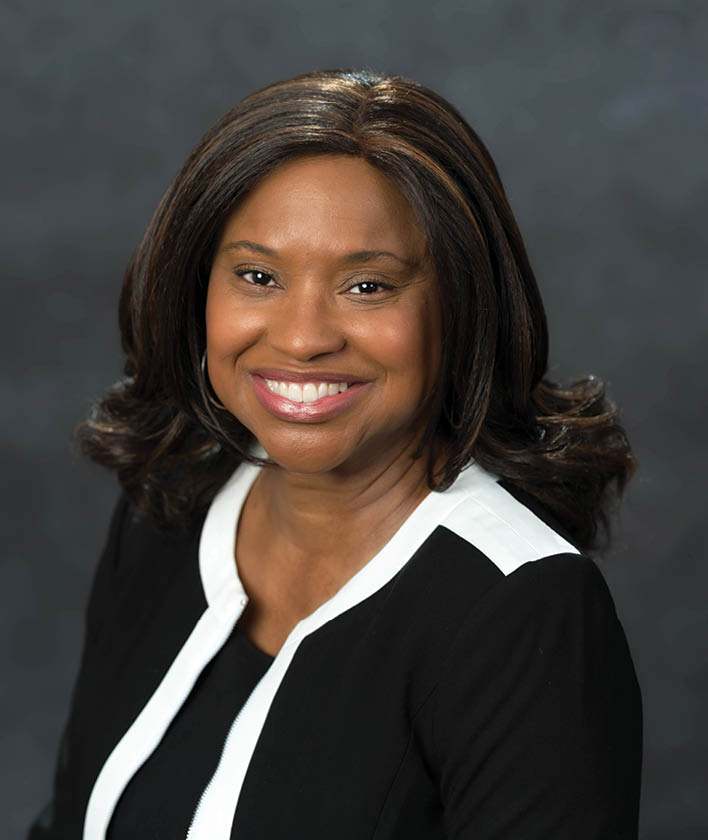A Whole Lot of New

When I became principal of Langley High School in McLean, VA, in 2018, I was a whole lot of new walking through the door on my first day. I became the first woman and the first person of color to serve in that role since the school opened in 1965.
But the differences were not just in how I looked. We are all influenced by our experiences in life; as a result, I brought a different perspective than my predecessors. In some ways, I think my focus has been wider. Yes, academics are important in our school, which is consistently ranked as one of the top high schools in Virginia. Maybe it is because I’m also a mother, but even before COVID-19, I spent a lot of time focused on caring for the whole child and their emotional as well as academic needs.
Before I applied for the job, I thought long and hard about what I could offer this remarkable school community. This was a school that was very high achieving and was doing amazing things. When I considered what the students needed from me as a building leader and from the staff, I outlined the “four Cs”—care, connect, celebrate, and commence. And even though students’ mental and emotional health are important, it is not enough to just focus on those. My goal is to ensure that our students become kindhearted human beings who can take care of themselves and one another and have a phenomenal high school experience.

At the same time, I am proud of how well our students have done academically. When I arrived, Langley had a 97% graduation rate. But in May 2022, 100% of our students walked across the stage as graduates. To me, it is a huge accomplishment to say that we were able to meet the needs of 525 seniors to ensure they graduated.
Feeling Forgotten
Not just here at Langley, but throughout my professional life, I have been the only person of color, or one of very few, in my workplace. It becomes very easy in that situation to feel as if you are being forgotten or overlooked. That experience influences my leadership; I want to make sure each and every one of our kids knows that they are seen and valued.
The same goes for my staff. Because representation matters, our staff has become more diverse. I am thoughtful and intentional about who we bring into the school and who we choose to work with our students.
I have also been involved with organizations, including NASSP, that can play an important role in diversifying the school leader pipeline. When I joined the NASSP Board of Directors in 2019, the board was already pretty diverse. But it has become even more diverse since then. During the NASSP Education Summit in July, someone commented on how diverse the board had become, not just through race but also through gender, and how valuable that was for them to see.
For me, serving on the board is about being able to celebrate our members and advocate on behalf of all of those who work in our schools and do phenomenal things in support of students and families every day.

Connecting With Other Leaders of Color
More specifically for me, the NASSP School Leaders of Color Network has provided an amazing opportunity to meet with people from across the country. One thing they say about being a principal is that it is a lonely job, but you really do not understand that until you are sitting in the seat. When you are leading as a woman and/or a person of color, that can make it even more isolating. That is why it is so valuable to connect with people who are going through the same experiences. Those connections reenergize me so I can continue to feel inspired to give the 100% that is necessary to work in support of my school community.
I am also active in the Washington, D.C., chapter of the Black Women’s Educational Alliance, Inc. We are a group of Black women who all work in various roles in education. We come together to give each other support so we can take care of ourselves and our school communities. I find it invaluable to have these connections that go beyond my city and my district.
One thing we focus on is how women, and especially women of color, need to be specifically tapped to pursue leadership positions. Male leaders often have a network of support around them. But that has not always been provided for women, so it is something we must initiate. If there are ways that we can help build those opportunities and work alongside women as they are applying to move into leadership, whether it is the principalship or beyond, it is important to support and prepare them. Any time I can help anyone, especially other women aspiring to school leadership positions, I am delighted to do so. That has always been a priority for me.
The Need to Diversify School Leadership
The students whom we are serving today are a more diverse group—there are more kids of color. However, that diversity is still not reflected as far as who they see in the teacher and administrator ranks. It is going to take a concerted and intentional effort from all of us who work in education to make sure we are promoting our profession as one where women and people of color want to be and can make a difference. Their experiences bring a different and valuable perspective that educators and students need.
We must also recognize that leadership becoming more diverse does not come at the expense of others. Historically, there has been a feeling that if one of us has a seat at the table, there is not room for someone else. However, that is not the case. As women and as people of color, we strengthen the school leadership pool, and that gives us all the best opportunity for success.
It is about kids. Diverse leadership ultimately enriches their educational experiences.
Kim Greer is the principal of Langley High School in McLean, VA, and a member of the NASSP Board of Directors.
